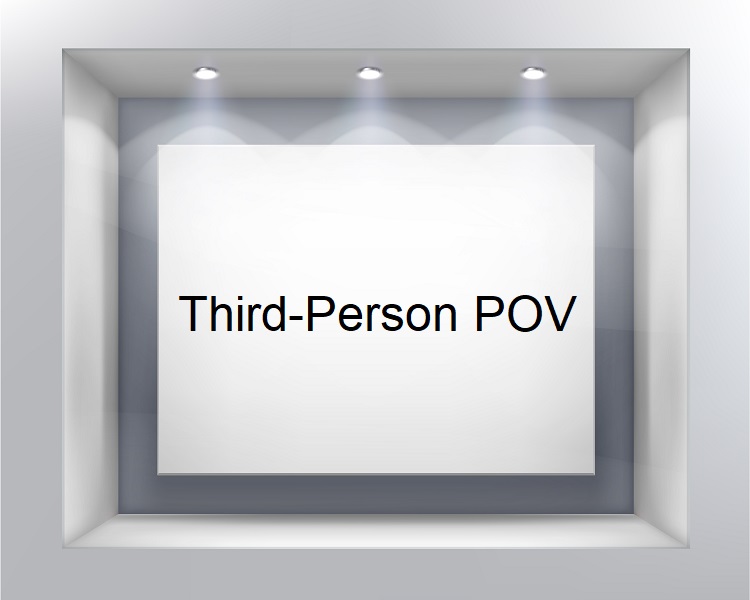In Writing Fiction: A Guide to Narrative Craft, Janet Burroway describes point of view (POV) as “the most complex element of fiction.” She’s right. Choosing and managing POV requires constant attention to the delicate relationship between reader, author, and character. And maintaining consistency can challenge even seasoned writers.
For novelists and short story writers alike, mastering third-person POV is both a craft necessity and a creative opportunity. This article focuses specifically on third-person narration—the most commonly used and often the most versatile POV in modern fiction.
Why POV Shifts Matter
Writers new to the craft often shift POV mid-scene for what seems like a good reason: to better tell a particular moment in the story. And sometimes, they’re not wrong—the content might be better served. But the delivery can suffer.
Abrupt or inconsistent shifts can undermine the reader’s trust. As mentioned in POV Part I, jarring transitions that break the reader-writer “pact” are a common reason agents and editors reject otherwise promising manuscripts. Readers want to feel anchored in the story world, and that means staying grounded in a clear, consistent perspective.
The goal isn’t to follow rigid “rules,” but rather to create and maintain your own internal rules and stick to them. Your particular approach to third-person narration is part of your authorial fingerprint—unique, recognizable, and central to your narrative voice.
The Three Faces of Third-Person
Third-person POV comes in three primary forms, each with its own degree of narrative distance and access to character consciousness. Choosing the right one—and committing to it—is a key decision.
-
Third-Person Omniscient
The narrator knows everything: thoughts, feelings, background, and futures of all characters. You can jump between characters, move freely through time and space, and offer insights beyond the characters’ awareness—even, if desired, into the minds of animals or inanimate objects. But omniscience must be carefully handled; it’s easy to confuse or overwhelm readers if transitions aren’t clearly signaled. -
Third-Person Limited
Here, the narrative is filtered through the lens of one character at a time—often the protagonist. Readers are given access to that character’s inner world, while all other characters are seen from the outside. It offers intimacy without the constraints of first person and is arguably the most popular POV in modern fiction. -
Third-Person Objective
This POV maintains emotional and psychological distance. The narrator reports only observable actions, dialogue, and setting details—no internal thoughts or judgments. Think of it as a camera recording the scene. Ernest Hemingway used this effectively in “Hills Like White Elephants.” , creating tension and subtext through omission.
POV as a Craft Choice
As our company’s founder Renni Browne notes in Self-Editing for Fiction Writers, many authors gravitate toward third-person narration to avoid the limitations of first person, which can box in the narrative and restrict access to other characters or parallel storylines.
But within third person, there’s still a wide spectrum. How close do you want readers to be to the character’s thoughts? How much narrative authority do you want to exert? What’s best for your story’s tone and structure?
These are not just artistic decisions—they’re technical ones. And they matter.
A Practical Exercise
To better understand the effect POV has on storytelling, try this:
Take a single scene from your story and rewrite it in all three versions of third person (omniscient, limited, and objective). You might even include a pass in first person for contrast.
Doing this early in the drafting process can help you discover the most natural and effective POV for your story. You’ll also gain a deeper feel for narrative distance, voice, and consistency.
Most importantly, you’ll develop stronger instincts for avoiding unintentional POV shifts—the kind that can pull readers out of your story and compromise your authority as a narrator.
Recommended reading:
- POV Part I: POV Mistakes That Sabotage Your Story – How to Spot and Fix Head-Hopping Before Your Reader Notices
- POV Part II: Writing With the Camera in Mind – Using Visual Metaphors to Control Narrative Distance and Voice
Looking for feedback on how you’re managing point of view in your novel or guidance on how you can handle viewpoint more effectively? Contact Ross Browne in the Tucson office to work with an experienced editor who can help.







